Gwangmu Reform
The Gwangmu Reform (Korean" 광무개혁, Hanja: 光武改革, Gwangmu Gaehyeok) was a chain of events that was aimed at modernizing and westernizing the Korean Empire as a late starter in the industrial revolution. The reform that took place during the Gwangmu Era from 1897 to 1907 showed, in the long term, Korean potential for starting and continuing modernisation, even in the face of adversity. This sort of development was unseen until the Myon Chang-era of the 1960s and 70s. The Gwangmu reform of Emperor Gojong later staged the fundamental background for future Korean development by building infrastructure, reforming the economy and creating the nucleus of the modern bureaucracy and military.
Reforms
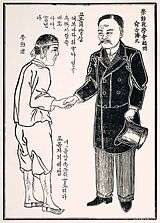
Abolition of the status system
Following the collapse of the Gabo government proclaiming the abolition of the status system, the loyalists’ cabinet was formed in 1896. The new cabinet, which became the Gwangmu government after the establishment of the Korean Empire, introduced systematic measures for abolishing the traditional class system. One of these was the new household registration system, reflecting the goals of formal social equality, which was implemented by the loyalists’ cabinet. Whereas the old registration system signified household members according to their hierarchical social status, the new system called for an occupation.[1]
Although most Koreans by that time had surnames and even bongwan, a substantial number of cheonmin, which mostly consisted of serfs and slaves, and untouchables still did not. According to the new system, they were then required to fill in the blanks for surname in order to be registered as constituting separate households. Instead of creating their own family name, some cheonmins appropriated their masters’ surnames, while others simply took the most common surname and its bongwan in the local area. Along with this example, activists within and outside the Korean government had based their visions of a new relationship between the government and people through the concept of citizenship, employing the term Inmin (people), and later, Kukmin (citizen).[1]

Lifestyle
During the Gwangmu period, Western-style official uniforms were introduced in Korea. At the start, the Korean Emperor had begun to wear Prussian-style royal attire along with Korean diplomats, who wore Western suits. In 1900, Western attire became the official uniform for the Korean civil officials. Several years later, all Korean soldiers and policemen were required to wear Western style uniforms.
Military
In the military sphere, the Korean army as it existed in the early 1890s consisted of about 5,000 soldiers and was increased to an immense amount of 28,000 right before the Russo-Japanese War. Training by Russian officers beginning in 1896 led to the organization of a 1,000-strong royal bodyguard armed with Berdan rifles that served as the core of an improved army. From this core unit, soldiers were sometimes transferred to other units, which included five regiments of about 900 men each.[2]
Finance
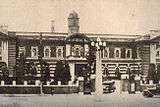
In 1897, the cadastral survey project was launched by the Gwangmu government, aiming at modernizing the landownership system. In order to apply Western surveying methods, U.S. surveyors were hired. After the survey, a property title “Jigye”, showing the exact dimension of the land, were supposed to be issued by the authorities concerned. That reform was closely involved to the reform of land tax system, which was conducted under the leadership of Yi Yong-ik, who also carried out the monetary reforms in Korea. The project was interrupted due to the Russo-Japanese war of 1904 and 1905, after having finished about two-thirds of the whole land.
Infrastructures
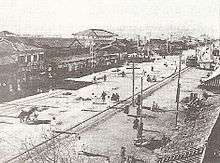
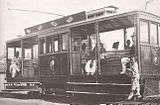
In that time, modern urban infrastructures were built by the Gwangmu government. In 1898, Gwangmu Emperor authorized the creation of a joint venture with American businessmen. In consequence, Hanseong Electric Company, operating a public electrical lighting network and an electric streetcar system was founded. Seoul Fresh Spring Water Company had an American connection as well. In 1902, six years after the first introduction of the telephone in Korea, the first long-distance public phone was installed.
Industries
During the Gwangmu period, the industrial promotion policy was also conducted by the Korean government. It gave support to found technical and industrial schools. In that time, along with modernized weaving factories which were established to meet demand for textiles on the domestic market, technological innovations in the field of weaving industry occurred in Korea. For instance, spinning and weaving machines were made for producing silk, so as to be substituted for high-cost machines from abroad.[3]
Education
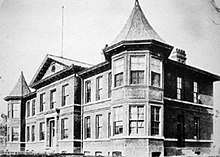
After Gojong proclaimed a new education law, elementary schools were established by the government. Along with these modern public schools, a number of Western-style schools, consisting of elementary and/or secondary education section(s), were established by Western missionaries.
During the Gwangmu period, modern secondary schools were opened by the Korean government as well, along with private secondary schools established by rich Korean civilians or Korean modern intellectuals. And several years later, modern higher education was first introduced to Korea: In 1904, the Jejungwon(Severance Hospital) in Seoul, added Severance Hospital Medical School and the attached School of Nursing. In 1905, Bosung College was established under Yi Yong-ik, Chief of the Imperial Treasury: the Commerce Department and the Law Department were the first two departments of the college. The Soongsil Academy, started at Pyongyang in 1897, had opened a college section in 1905 and was authorized as the Soongsil University by the Korean government in 1907.[4] Under the Education Ordinance of 1911 issued by Japanese Governor-General of Korea, however, these institutions lost college status. During the period of 1885-1910, a total of 796 schools, from elementary to college levels, were established and maintained by the Western missionaries. This is a significant number in that it comprises about thirty-five percent of the entire number of formal schools (2,250) in the Korean Empire.[5]
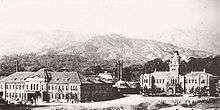
Health care system
The modern health care system in Korea had been formed for about 30 years since opening the country in 1876. Most of the system had been achieved during the Gwangmu Reform period directed by the Emperor and his followers.[8] The new system consisted of three sectors: public health, medical care, and monitoring of private practitioners and drug-sellers. The Sanitary Board was set to provide systematic public health care such as vaccination, sanitation and quarantine and the police were created to enforce many sanitary affairs. Hospitals for Western medicine were established in the medical care sector. Licensing for herbal doctors and pharmacists was taken in order to control the quality of private practitioners.
See also
- Korean Empire
- Timeline of the Gwangmu Reform
- Meiji Restoration, the similar process in neighboring Japan
Notes
- Hwang, Kyung Moon (2004), University of Southern California. Citizenship, Social Equality and Government Reform: Changes in the Household Registration System in Korea, 1894-1910
- Keltie 1900, p. 791.
- Jae-gon Cho The Industrial Promotion Policy and Commercial Structure of the Taehan Empire. Seoul: Jimoondang Publishing Company (2006)
- Abe, Hiroshi (1971), Higher Learning in Korea under Japanese Rule The Developing Economies, 9.
- Insoo Sohn, History of Korean Education, 2 vols. (Seoul Muneumsa,1987)
- "서울대병원-연세대병원 '역사 전쟁' 시작됐다" [Seoul National University Hospital, Yonsei hospital 'history wars' began.]. Pressian Coop. August 21, 2006.
- "East meets West in downtown architecture - Foreigner-designed buildings". JoongAng Ilbo. May 2, 2011. Yabashi Genji is incorrect. ja:矢橋賢吉Yabashi Kenkichi is correct.
- D.W. Shin, S.I. Hwang (1996). The Historical Interpretation on the Formation of the Modern Health Care System in Late Choson.
References
- Dong-no Kim, John B. Duncan, Do-hyung Kim (2006), Reform and Modernity in the Taehan Empire (Yonsei Korean Studies Series No. 2), Seoul: Jimoondang Publishing Company
- Jae-gon Cho, The Industrial Promotion Policy and Commercial Structure of the Taehan Empire.
- Keltie, J.S., ed. (1900). The Statesman's Year Book: Statistical and Historical Annual of the States of the World for the Year 1900. New York: MacMillan.
- D.W. Shin, S.I. Hwang (1996). The Historical Interpretation on the Formation of the Modern Health Care System in Late Choson. Department of the History of Medicine and Medical Humanities, Seoul National University College of Medicine, Korea.
- The Special Committee for the Virtual Museum of Korean History (2009), Living in Joseon Part 3: The Virtual Museum of Korean History-11, Paju: Sakyejul Publishing Ltd.
Further reading
- Rossetti, Carlo. Corea E Coreani: Impressioni E Ricerche Sull'impero Del Gran Han. Bergamo: Istituto Italiano D'Arti Grafiche, 1904. Print.
- Yi, T'ae-jin. The Scene of Modernization. Reillumination upon the Gojong Era. Seoul: Taehaksa, 2000. 231-402. Print.